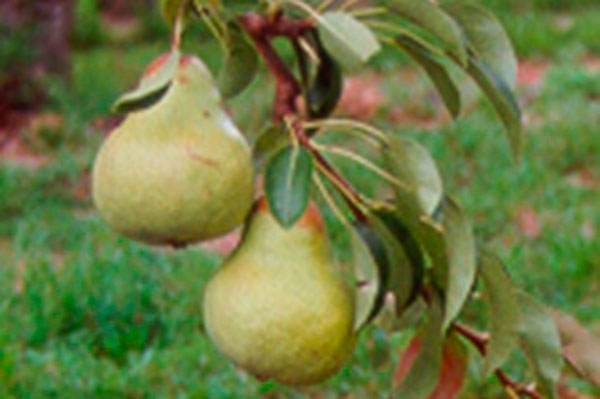Post-bloom thinning (continued from last month)
Post-bloom thinning
The post-bloom thinner BA also proved to be a consistent thinner of Packham, and it can be applied as early as 10 dAFB to as late as 40 dAFB following a blossom application of either ethephon or ATS (Figure 4a).
However there was a loss in fruit size with later applications (Figure 4b). Normally with increased thinning effect we see an increase in fruit weight/size—the decrease observed in this work with the later BA applications was most likely due to resources being directed to fruit which later drops.
If thinning is completed earlier there is less wastage of resources into fruit which will ultimately be removed by either late post-bloom thinning chemicals or hand thinning.
A range of BA concentrations from 50 through to 200 mg/L were examined and the most effective concentration range was found to be 100–150 mg/L. This is similar to the recommendation for apples.
Combining blossom and post-bloom thinners
ATS can also be effectively combined in a program with the post-bloom thinner BA (Figure 5a). This gives increased options when determining thinning programs, as either ATS or ethephon can be used as a blossom thinner prior to application of BA post-bloom.
While BA can be used as a stand alone thinner of Packham, it is risky to rely on one spray application in case weather conditions are unsuitable for application. Two applications of BA did not increase the thinning effect, hence would not be recommended.
Impact on fruit quality
All chemicals examined maintained or improved fruit quality measured as size, firmness and sugar content, but ATS caused a slight increase in skin russet. However, this increase in russet was ameliorated when BA was added to the thinning program (Figure 5b).
The negative effect of crop load on fruit firmness was also demonstrated, with fruit from trees with higher crop loads being less firm that fruit from low crop load trees (Figure 6).
Conclusion
The trials undertaken in this three year study demonstrate that there are viable options for chemical thinning of Packham pear.
ATS was effective as a blossom thinner and the recommendation is for two applications applied at 1.0% (v/v), with the first application at 20–25% bloom and the second application at 50% bloom.
If further thinning is required, this can be followed with a post-bloom application of 100 mg/L BA applied from 10-40 dAFB, however, the earlier the BA is applied the greater the benefits on fruit size.
It should be noted that in the trials described here all chemicals were applied at high volume. If low volume controlled droplet application (CDA) technology is used for application of desiccants then the recommendation for concentration is likely to alter. These results also only refer to one cultivar, Packham’s Triumph, and caution is required if transferring recommendations to other cultivars without further scientific justification.
While this work has resulted in practical recommendations for the use of a range of chemical thinning agents to manage crop load in Packham pear, there has unfortunately not been a follow-through by chemical companies to include pears on the chemical labels for these products.
For more information, see Tree Fruit September 2015






















